All issues

Volume 37, Issue 5
Displaying 1-5 of 5 articles from this issue
- |<
- <
- 1
- >
- >|
-
Yuriko FUKUI, Sonoko ISHIHARA, Keiko MATSUI, Yasuhito SATO, Taiyo SUGA ...2006 Volume 37 Issue 5 Pages 277-283
Published: October 25, 2006
Released on J-STAGE: February 07, 2011
JOURNAL FREE ACCESSWe examined the effects of several problem-based learning (PBL) tutorials on the development of clinical abilities among medical students. In 1988, 2 years before our university implemented the PBL tutorial curriculum, one to three trial tutorials were used for a portion of the students in the 1st through 3rd years to identify a suitable tutorial education system for Japanese students. To examine the effects of these trial tutorials, we sent questionnaires to graduates who had participated in the trial tutorials and to those who had not. We found that graduates who had participated in the trial tutorials were more likely than graduates who had not to report logical thinking capabilities during their undergraduate years and clinical problem-solving abilities at the end of their internship. The results suggest that the use of one or more tutorials is effective in helping students develop logical thinking and problem-solving ability.View full abstractDownload PDF (1253K) -
Atsuhiro HAYASHI, Hidetoki ISHII, Kei ITO, Kumiko SHIINA, Haruo YANAI, ...2006 Volume 37 Issue 5 Pages 285-291
Published: October 25, 2006
Released on J-STAGE: February 07, 2011
JOURNAL FREE ACCESSA nationwide survey of Japanese teachers belonging to departments of medicine was conducted to investigate their opinions about: 1) expanding medical departments into medical schools and, 2) the required subjects and selection criteria for admitting students to the faculty of medicine. We found that responses to both questions depended largely on the specialty of the teachers. With regard to the medical school design, which will cause a dramatic change in medical education in Japan, 60% of the teachers were in favor of expanding departments into medical schools.View full abstractDownload PDF (1228K) -
Toshio NAKAKI, Kiichiro MATSUMURA, Shigeru FURUI2006 Volume 37 Issue 5 Pages 299-304
Published: October 25, 2006
Released on J-STAGE: February 07, 2011
JOURNAL FREE ACCESSA trial of a fingerprint recording system (FPRS) to precisely record class attendance was carried out with third-year students at our medical school. Along with this new system, a conventional card method was used to confirm attendance. The FPRS consists of a fingerprint recording unit, a communication control unit, and a personal computer. Each student was required to register a fingerprint before the trial started. Attendance was recorded by placing the registered finger on the fingerprint recording unit. The recording, comprising each student's name and the time, was stored in the communication control unit and transferred to the personal computer through the RS-232 cable. The RS-232 cable can be replaced with an Internet environment. In the trial performed in a pharmacology course, 95 medical students were enrolled, and the total student-lecture number was 3008. On 149 occasions students forgot to record their fingerprints. One student reported that his fingerprint was not recognized by the recording unit. However, the problem was solved when he registered his fingerprint again. The attendance recorded by the conventional method confirmed that recorded by the FPRS. After completion of the trial, 26 students volunteered to give their impressions about the FPRS. They were divided on the basis of their impressions ( “positive”, “negative”, and “conditionally positive” ) into three groups of approximately equal number. The observations suggest that the impression of the FPRS varies among students and that this variation is unrelated to either student performance or the attendance rate. This trial found no major technical problems in recording attendance with the FPRS.View full abstractDownload PDF (3523K) -
Akito TSUTSUMI, Satoshi ITO, Ayumi TAKAYASHIKI, Fujio OTSUKA, Yoshio N ...2006 Volume 37 Issue 5 Pages 305-310
Published: October 25, 2006
Released on J-STAGE: February 07, 2011
JOURNAL FREE ACCESSWe conducted an outpatient escort program as a part of our early exposure curriculum for first-year medical students. Each student escorted one patient at the University of Tsukuba Hospital throughout his or her first visit. This program enabled the students to experience and think about the system of a university hospital from a patient's point of view. We believe that this program is useful to motivate first-year medical students in their future studies.View full abstractDownload PDF (966K) -
Hiroyuki MORITA, Yoshihiro UNO, Tatsuo ISHIZUKA, Isao HOZUMI, Takashi ...2006 Volume 37 Issue 5 Pages 311-315
Published: October 25, 2006
Released on J-STAGE: February 07, 2011
JOURNAL FREE ACCESSSince 2000 we have used a home-visit nursing program for fifth-year medical students at Gifu University to examine the significance of domiciliary and geriatric medicine. We used questionnaires before and after the program to evaluate its effects on students. The desire of students to be involved with both domiciliary and geriatric medicine as phys iciansincreased after the program. Greater increases were observed among students who knew less before the program about the significance of home and elder care. The program was effective for encouraging medical students to think about domiciliary and geriatric medicine.View full abstractDownload PDF (1027K)
- |<
- <
- 1
- >
- >|